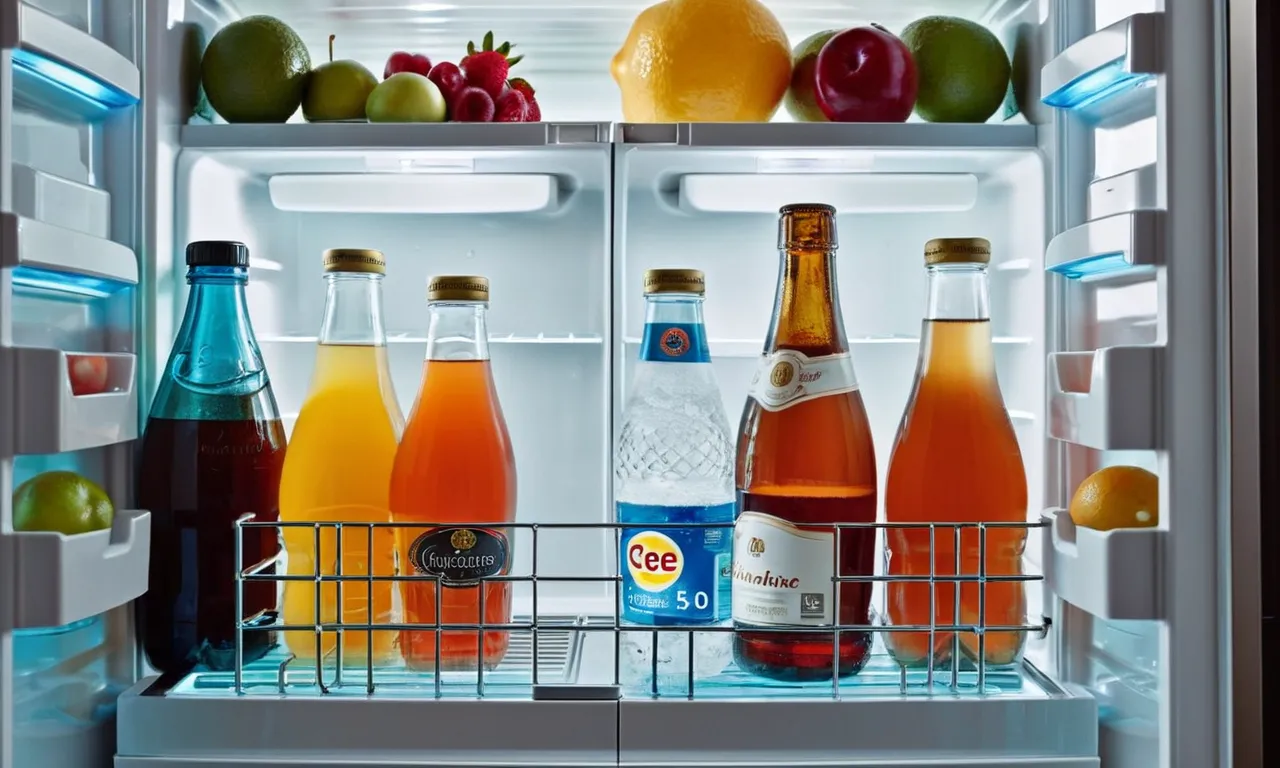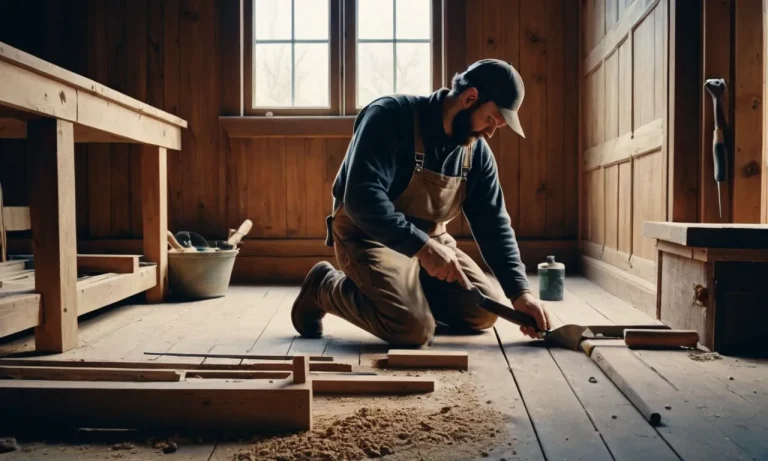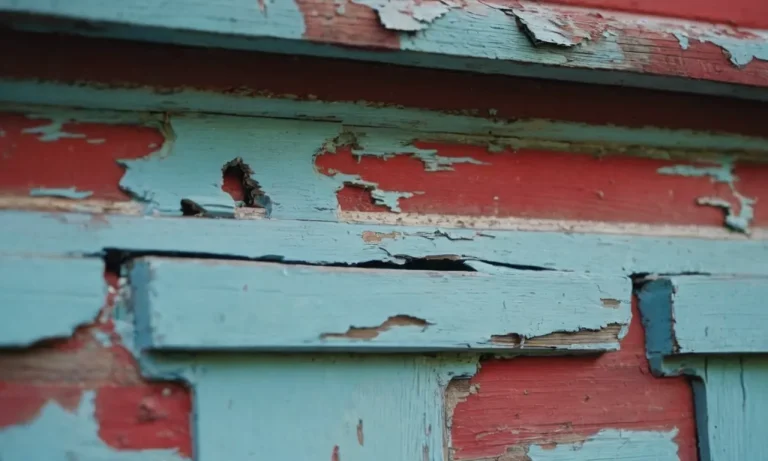How To Fix A Ge French Door Fridge Not Making Ice
Having issues with your GE French Door refrigerator not making ice can be extremely frustrating, especially when all you want is a cold drink on a hot day. But don’t worry, in this comprehensive guide we’ll walk you through all the troubleshooting steps needed to get your ice maker up and running again.
If you’re short on time, here’s a quick answer to your question: The most common reasons a GE fridge ice maker stops working are a frozen or clogged water line, faulty water inlet valve, failed mold thermostat or shutoff arm, or a malfunctioning control module.
Checking these parts and performing some basic maintenance should get your ice maker working again.
In this detailed tutorial, we’ll cover common ice maker problems, how to troubleshoot your specific issue, step-by-step repair instructions, and preventative maintenance tips to keep your GE ice maker working properly.
Common Reasons a GE Fridge Ice Maker Stops Working
Frozen or Clogged Water Line
One common reason why a GE fridge ice maker stops working is a frozen or clogged water line. When the water line becomes frozen, it restricts the flow of water to the ice maker, resulting in no ice production.
To fix this issue, you can try defrosting the water line by turning off the fridge and using a hairdryer to gently warm the line. It’s important to be cautious and not use excessive heat, as it could damage the plastic tubing.
If the problem persists, it may be necessary to replace the water line altogether.
Faulty Water Inlet Valve
Another possible reason for a GE fridge ice maker not making ice is a faulty water inlet valve. The water inlet valve controls the flow of water into the ice maker, and if it malfunctions, it can prevent the ice maker from receiving water. In this case, the valve may need to be replaced.
It’s recommended to consult the user manual or contact a professional technician to properly diagnose and replace the faulty valve.
Failed Mold Thermostat
The mold thermostat is responsible for regulating the temperature inside the ice maker to ensure proper ice production. If the mold thermostat fails, it can cause the ice maker to stop working. Testing the thermostat with a multimeter can determine if it is functioning correctly.
If it is found to be faulty, replacing the mold thermostat should resolve the issue and restore ice production.
Stuck or Faulty Shutoff Arm
The shutoff arm in a GE fridge ice maker is designed to stop ice production when the ice bin is full. If the shutoff arm gets stuck in the up position or becomes faulty, it can prevent the ice maker from making ice.
Checking the position of the shutoff arm and ensuring it moves freely is a simple step that may solve the problem. If the arm is broken or not functioning properly, it may need to be replaced.
Bad Control Module
The control module, also known as the ice maker module or ice maker control board, is responsible for controlling the various functions of the ice maker. If the control module becomes faulty, it can cause the ice maker to stop working.
Replacing the control module is often necessary to restore ice production. It’s important to note that control modules can vary depending on the model of the GE fridge, so consulting the user manual or seeking professional assistance is recommended.
How to Troubleshoot Your GE Fridge Ice Maker
Is your GE French door fridge not making ice? Don’t worry, there are a few troubleshooting steps you can take to fix the issue. Here are some common problems and solutions to get your ice maker back up and running.
Check if Water Line is Frozen
One of the most common reasons for a GE fridge not making ice is a frozen water line. To check if this is the issue, you can first inspect the water line behind the fridge. Look for any visible signs of ice buildup or blockage. If you find any, use a hairdryer on a low heat setting to thaw the ice.
Be sure to keep the hairdryer a safe distance away from any plastic parts to prevent damage.
Inspect the Water Inlet Valve
The water inlet valve is responsible for supplying water to the ice maker. If it is faulty or clogged, it can prevent the ice maker from making ice. To inspect the water inlet valve, locate it behind the fridge and check for any visible signs of damage or blockage.
If needed, you can also use a multimeter to test its functionality. If the valve is defective, it will need to be replaced.
Test the Mold Thermostat
The mold thermostat is a small device that monitors the temperature inside the ice maker mold. If it is not functioning properly, it can prevent the ice maker from cycling and producing ice. To test the mold thermostat, you can use a multimeter to check its continuity.
If it does not have continuity, it will need to be replaced.
Examine the Shutoff Arm
The shutoff arm is a metal or plastic rod that is responsible for detecting when the ice bin is full. If the arm is stuck in the “up” position, it can prevent the ice maker from producing ice. Make sure the arm moves freely and is not obstructed by any ice or debris.
If necessary, gently push the arm down to see if it triggers the ice maker to start producing ice.
Reset Control Module
If none of the above solutions fix the issue, you can try resetting the control module of your GE fridge. To do this, unplug the fridge from the power source for a few minutes and then plug it back in.
This can sometimes resolve any temporary glitches or errors that may be causing the ice maker to malfunction.
Remember, if you are unsure about any of these troubleshooting steps or if the problem persists, it is always best to consult a professional technician or contact GE customer support for further assistance.
Step-by-Step Instructions for Fixing Ice Maker Issues
Defrosting a Frozen Water Line
If your GE French Door fridge is not making ice, one possible issue could be a frozen water line. To defrost the water line, follow these steps:
- Unplug the fridge from the power source.
- Locate the water line behind the fridge and identify any visible ice buildup.
- Use a hairdryer on a low heat setting to carefully melt the ice. Be cautious not to apply too much heat or directly touch the water line.
- Once the ice has melted, wipe away any excess moisture.
- Reconnect the fridge to the power source and check if the ice maker is now functioning properly.
Replacing Water Inlet Valve
If defrosting the water line doesn’t resolve the issue, it may be necessary to replace the water inlet valve. Here’s how:
- Turn off the water supply to the fridge.
- Unplug the fridge from the power source and locate the water inlet valve, usually found at the back of the fridge.
- Disconnect the water supply line from the valve and remove any mounting screws or brackets securing it in place.
- Install the new water inlet valve by reversing the removal steps.
- Turn on the water supply, plug the fridge back in, and check if the ice maker is now working.
Changing the Mold Thermostat
If the above steps don’t solve the issue, the mold thermostat may need to be replaced. Here’s how:
- Unplug the fridge from the power source and locate the mold thermostat, often found near the ice mold.
- Disconnect the wires connected to the thermostat and remove any mounting screws or brackets.
- Install the new mold thermostat by reversing the removal steps.
- Plug the fridge back in and check if the ice maker is now functioning correctly.
Fixing Stuck Shutoff Arm
If the ice maker is still not making ice, a stuck shutoff arm could be the culprit. Follow these steps to fix it:
- Unplug the fridge from the power source and locate the shutoff arm, usually found near the ice mold.
- Gently push the shutoff arm up and down to ensure it is not stuck in a fixed position.
- If the arm is stuck, carefully free it by gently wiggling or adjusting it.
- Plug the fridge back in and check if the ice maker is now working properly.
Resetting Control Module
If none of the previous steps resolve the issue, resetting the control module may help. Here’s how:
- Unplug the fridge from the power source and wait for at least 30 seconds.
- Plug the fridge back in and wait for the control panel to reset.
- Check if the ice maker is now functioning correctly.
If the issue persists after following these troubleshooting steps, it is recommended to contact a professional technician or visit the GE Appliances website for further assistance.
GE Ice Maker Maintenance Tips
Having a GE French door fridge that isn’t making ice can be frustrating, but there are several maintenance tips you can try before calling for professional help. By following these simple steps, you might be able to fix the issue and have ice cubes flowing again in no time.
Clean Ice Maker Regularly
One common reason for a GE French door fridge not making ice is a dirty ice maker. Over time, mineral deposits and debris can build up in the ice maker, affecting its performance. To clean it, start by unplugging the fridge and removing the ice bin.
Use warm water and a mild soap to gently clean the ice bin and any visible parts of the ice maker. Be sure to rinse thoroughly and allow the parts to dry completely before reassembling. Cleaning the ice maker regularly can prevent clogs and ensure that it functions properly.
Replace Water Filter as Needed
Another reason your GE fridge may not be making ice is a clogged or expired water filter. The water filter is responsible for removing impurities from the water before it enters the ice maker. Over time, the filter can become clogged, reducing water flow and affecting ice production.
Refer to your fridge’s manual to determine the location of the water filter and how often it should be replaced. Typically, water filters should be replaced every six months. By regularly replacing the water filter, you can maintain optimal ice production and quality.
Keep Door Seals in Good Condition
The door seals, also known as gaskets, play a crucial role in maintaining the temperature inside your GE fridge. If the door seals are damaged or worn out, warm air can enter the refrigerator, causing the ice maker to work harder to maintain the desired temperature.
To ensure that the door seals are in good condition, regularly inspect them for any signs of wear or damage. If you notice any issues, such as cracks or gaps, consider replacing the door seals. This will not only improve ice production but also help reduce energy consumption.
Level Refrigerator Properly
Lastly, an improperly leveled refrigerator can also impact the performance of the ice maker. If your fridge is not level, the water may not flow properly to the ice maker, resulting in reduced ice production.
To check if your refrigerator is level, place a spirit level on top of the fridge and adjust the leveling feet until the bubble is centered. This simple adjustment can help ensure that water is distributed evenly to the ice maker, allowing it to produce ice cubes efficiently.
By following these maintenance tips, you can increase the chances of fixing a GE French door fridge that is not making ice. However, if the issue persists, it may be best to contact a professional technician for further assistance.
Conclusion
Having an ice maker stop working can be really inconvenient, but with some troubleshooting and basic maintenance, you can get your GE French door refrigerator back to producing icy cold cubes in no time. Follow the tips outlined here to diagnose and fix any ice maker problems.
With the right tools and parts, this is often a DIY job homeowners can tackle themselves. Just be sure to unplug the appliance and use caution when working with electrical components. Get your fridge fixed and enjoy chilled drinks from your own ice supply again!







